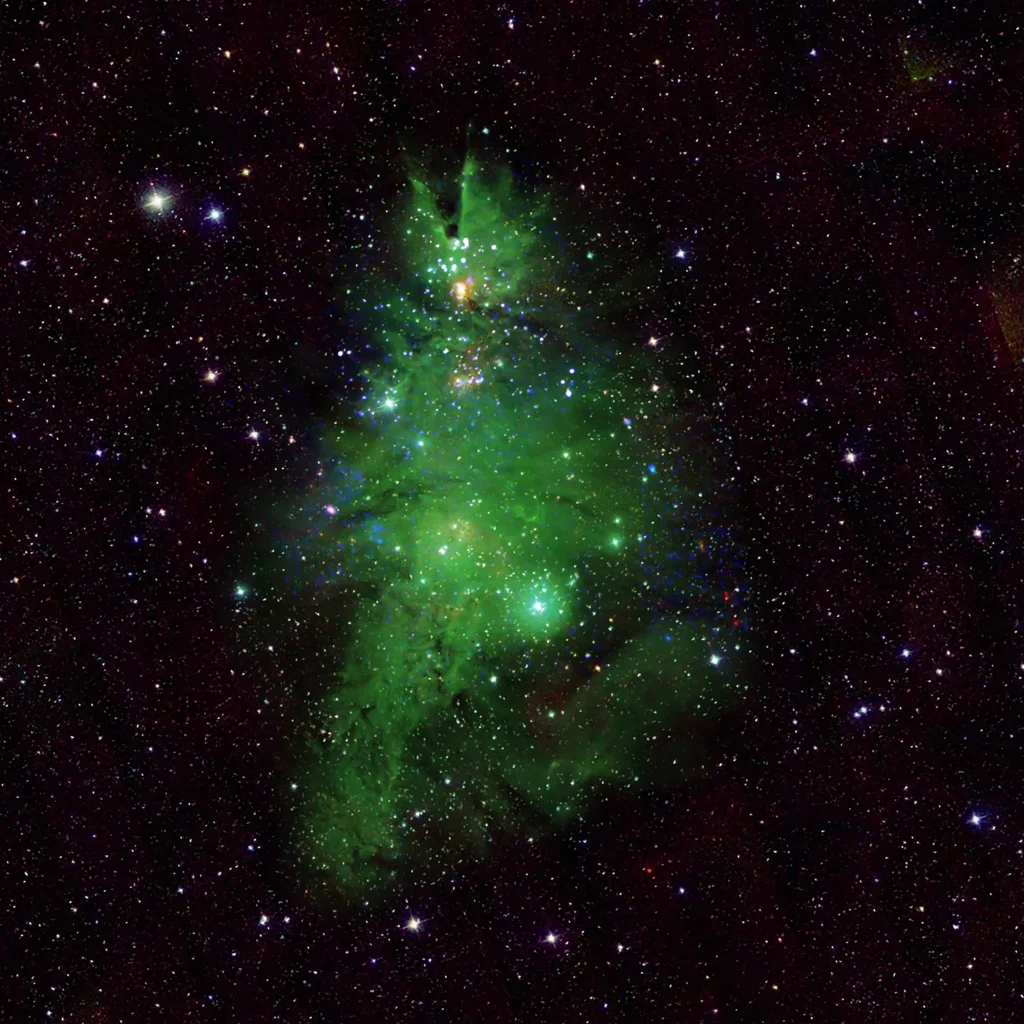Look no further if you’re seeking some extra sparkle this holiday season, as the night sky has something truly mesmerizing to offer. Recently, NASA revealed an awe-inspiring image of a celestial Christmas tree that is truly out of this world.
This captivating image showcases NGC 2264, a cluster of youthful stars that beautifully resemble the shape of a Christmas tree. Adorned with blue and white ornaments and adorned with green pine needles, this cluster is famously known as the “Christmas Tree Cluster.” It is situated approximately 2,500 light-years away from our planet.
To create this remarkable image, NASA combined data from various telescopes. The X-rays emitted by the blue and white stars were detected by NASA’s Chandra X-ray Observatory. The green gas in the background represents the nebula enveloping the cluster, which was observed using the WIYN 0.9-meter telescope on Kitt Peak, funded by the National Science Foundation. Additionally, the white stars in the foreground and background were captured by the Two Micron All Sky Survey, which utilized infrared light to map the entire sky.

The orientation of the image was altered by approximately 160 degrees in a clockwise direction, resulting in the tree’s top aligning with the top of the image. This deviation from the typical arrangement of astronomers, where the North is positioned upwards, is noteworthy.
The stars within the Christmas tree cluster are relatively young, ranging from 1 to 5 million years old. Among them, some stars are diminutive, merely one-tenth the size of our sun, while others are colossal, surpassing our sun’s size by several times. These stars possess a lengthy lifespan ahead of them, unlike other stars that have aged billions of years and are nearing their eventual demise.
Regrettably, the Christmas tree cluster is too dim to be observed with the naked eye. However, you can still revel in some celestial festivities. The Ursid meteor shower, which reaches its peak on December 23 and 24, can generate up to 10 shooting stars per hour in the Northern Hemisphere.

